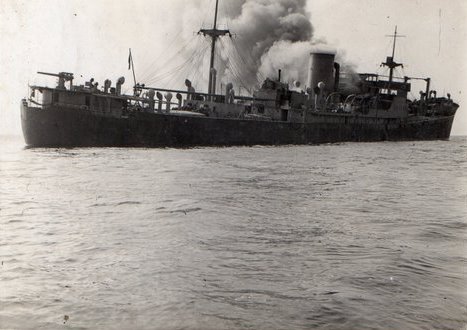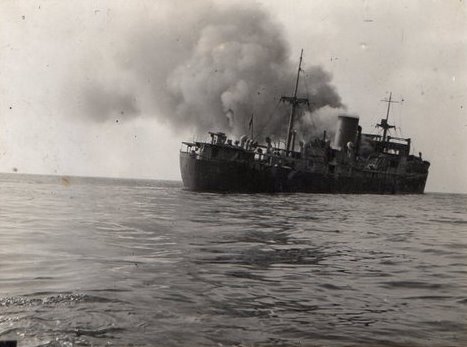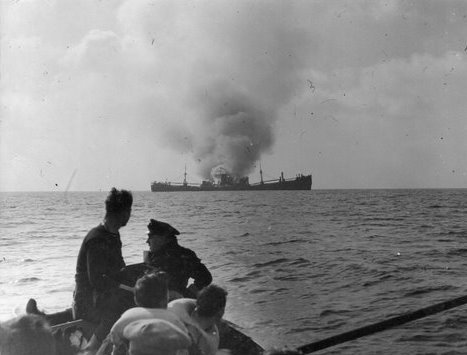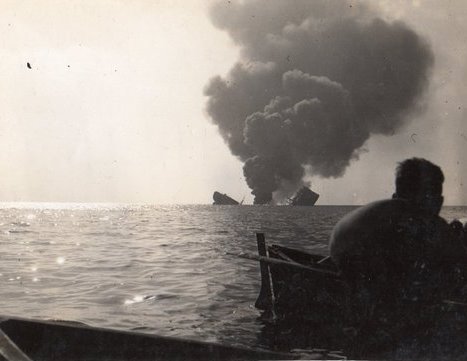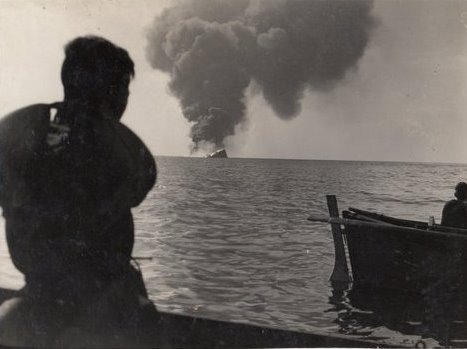Pacific Reliance
British Motor merchant
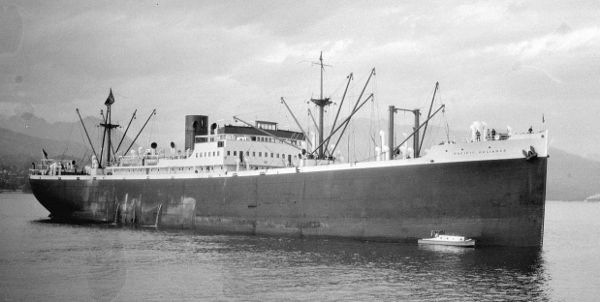
Photo from City of Vancouver Archives, CVA 447-2546
| Name | Pacific Reliance | ||
| Type: | Motor merchant | ||
| Tonnage | 6,717 tons | ||
| Completed | 1927 - Blythswood Shipbuilding Co Ltd, Glasgow | ||
| Owner | Furness, Withy & Co Ltd, Liverpool | ||
| Homeport | London | ||
| Date of attack | 4 Mar 1940 | Nationality: | |
| Fate | Sunk by U-29 (Otto Schuhart) | ||
| Position | 50° 28'N, 5° 49'W - Grid BF 2161 | ||
| Complement | 53 (0 dead and 53 survivors). | ||
| Convoy | OA-102 (dispersed) | ||
| Route | London (2 Mar) - Liverpool - Manchester | ||
| Cargo | General cargo, including cotton and aircraft parts | ||
| History | Completed in September 1927 | ||
| Notes on event | At 11.00 hours on 4 March 1940 U-29 sighted three ships from the recently dispersed convoy OA-102 in very fine weather north of Land’s End and carefully approached the Pacific Reliance (Master Evan Owen Evan) and the San Florentino (Master W.T. Douglas) sailing close together for a submerged daylight attack, firing one G7e torpedo at each of them at 12.08 and 12.09 hours. The first torpedo already detonated after 25 seconds and the U-boat was badly shaken by the explosion, while only a small detonation was heard from the second torpedo after 75 seconds. The Germans assumed that the first torpedo had hit the freighter, which was observed to stop with the crew preparing to launch the lifeboats but then continued slowly with a fire visible aboard. In fact, the first torpedo detonated prematurely about half a cable from the starboard beam of San Florentino without damaging her and it was the second torpedo that struck Pacific Reliance on the starboard side abreast her funnel while steaming on a zigzag course at 11 knots. The ship was armed with one 4in gun and had convoy commodore (Capt Richard Percy Galer, RD, RNR) and four naval staff members aboard. The torpedo with a magnetic fuze actually detonated underneath the ship, lifting it up and throwing a huge column of water in the air that came down over the starboard lifeboats and amidships. The starboard engine collapsed from the bottom and the ship immediately took a starboard list of 15° after water entered the holds through the wrecked engine room bulkhead. Cracks in the hull became visible on both sides and the master ordered the crew to get the lifeboats ready after he managed to snap the whistle lanyard as it blew an awful din. To make things worse the cargo of cotton had caught fire and a terrific amount of smoke was seen to come out of #4 hold, the flames soon reaching the cargo of solvens on the fore deck. Most crew members abandoned ship in all four lifeboats after the wireless operator unsuccessful tried to send distress signals, but the last man to leave was the commodore who saw after the boats first, then went down through all the mess and lower deck in darkness to make sure that everyone left, got some clothes as he was only partly dressed and even recovered a code book left behind in the wireless cabin. Meanwhile four men had rescued themselves by climbing aboard a hatch cover floating nearby, but the lookouts aboard the fleeing San Florentino somehow mistook it for a U-boat and fired two rounds from the stern gun. Luckily the shots fired from a distance of about one mile missed and the men were eventually picked up by one of the lifeboats. The distress signal sent by the tanker was heard by the xB-Dienst (radio intelligence service) that wrongly credited U-29 with sinking this ship. Because the burning Pacific Reliance only settled slowly, the U-boat moved to her port side and fired a third G7e torpedo from the stern torpedo tube at 12.39 hours, but no detonation was heard. However, the ship was then seen to sag in the middle with the bow and stern rising until breaking in two and sinking in two pieces about 19 miles northwest of St. Ives, Cornwall. The air-locked bow turned over on its side and remained afloat for about an hour. An aircraft appeared on the scene and tried to guide the lifeboats in a certain direction, but the survivors hoisted the sails to get away as far as they could to prevent that any vessel trying to pick them up should also be torpedoed. Shortly afterwards the master, the commodore, four naval staff members and 47 crew members were rescued by the British coaster Macville which was guided to them by the aircraft and took the four boats in tow, bringing them to Newlyn, Cornwall. Photos of the sinking Pacific Reliance: | ||
| On board | We have details of 5 people who were on board. | ||
If you can help us with any additional information on this vessel then please contact us.

